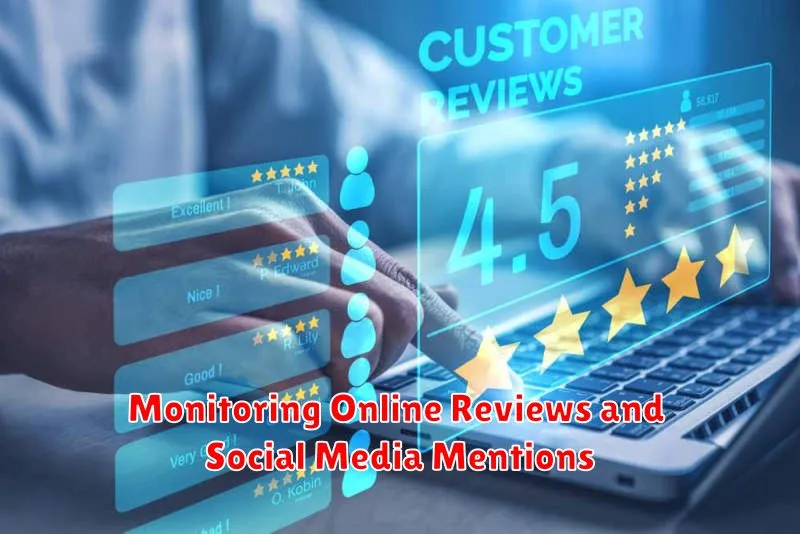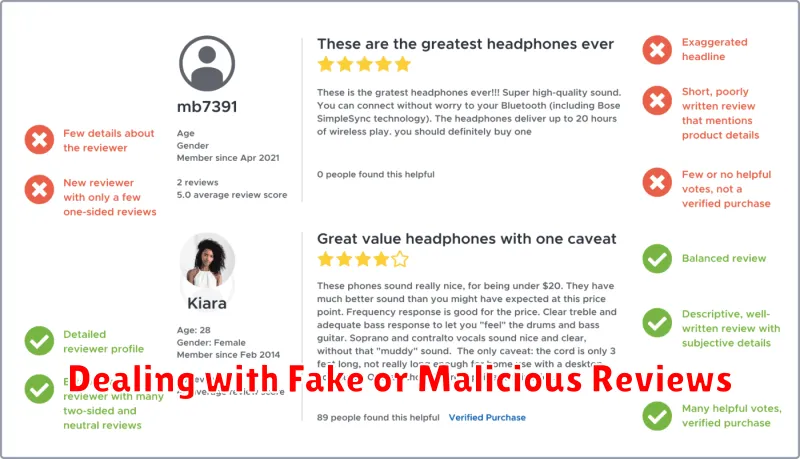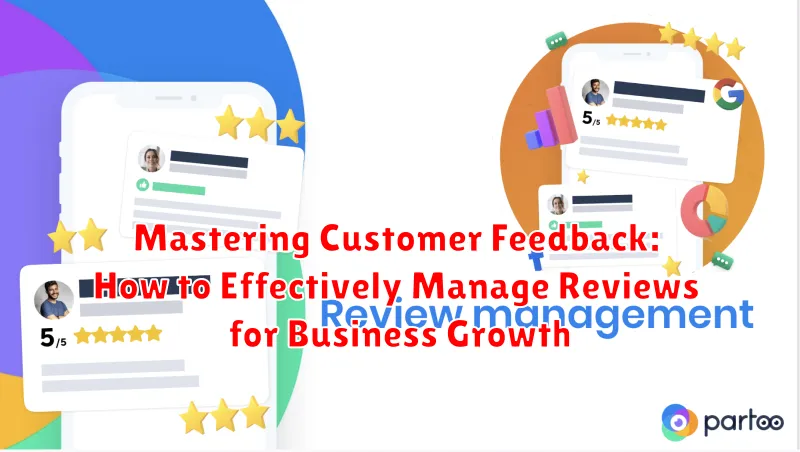In today’s interconnected world, customer feedback plays a pivotal role in shaping business success. Managing reviews effectively is no longer optional, but a critical component of growth. This article explores the essential strategies and techniques for mastering customer feedback and leveraging it to drive positive change. Understanding how to effectively collect, analyze, and respond to reviews can significantly impact your business reputation, customer loyalty, and ultimately, your bottom line. From handling negative feedback constructively to amplifying positive reviews, we’ll delve into the best practices for turning customer feedback into a powerful engine for business growth.
Whether you’re a small startup or an established enterprise, mastering customer feedback is an ongoing process. This article will equip you with the knowledge and tools to navigate the complexities of online reviews, social media commentary, and direct customer interactions. Learn how to transform customer feedback into actionable insights, improve your products and services, and cultivate a customer-centric culture that fosters business growth. By embracing effective management of customer feedback, you can gain a competitive edge and build a thriving business built on a foundation of customer satisfaction and trust.
Understanding the Importance of Reviews and Feedback
In today’s interconnected world, customer reviews and feedback hold immense power. They directly influence consumer perception and purchasing decisions. Potential customers often rely heavily on reviews to gauge the quality and reliability of products and services before making a purchase.
Positive reviews act as social proof, building trust and credibility. They can significantly boost sales and attract new customers. Conversely, negative reviews can deter potential buyers and damage a business’s reputation. Therefore, understanding the importance of managing both positive and negative feedback is crucial for sustained growth.
Reviews offer invaluable insights into customer experiences. They highlight what aspects of your business are working well and what areas require improvement. This feedback loop enables businesses to identify strengths, weaknesses, and opportunities for innovation and refinement.
Strategies for Encouraging Positive Reviews
Proactively seeking positive reviews is crucial for building a strong online reputation. Make it easy for satisfied customers to share their experiences.
Simplify the process. Direct customers to relevant review platforms through clear calls to action. Consider using QR codes, email follow-ups, or in-store signage.
Provide excellent customer service. A positive customer experience is the foundation of a positive review. Train staff to provide exceptional service and address customer needs effectively.
Personalize the request. A generic request is less effective than a personalized one. Acknowledge the customer’s specific interaction with your business when asking for a review.
Offer incentives (with caution). While incentives can encourage reviews, ensure they comply with platform guidelines and don’t compromise the authenticity of the feedback.
Addressing Negative Reviews with Tact and Diplomacy
Negative reviews are inevitable in any business. How you address them, however, can significantly impact your reputation. Responding effectively can turn a dissatisfied customer into a loyal one and demonstrate your commitment to customer satisfaction to potential clients.
Respond promptly. A quick response shows you value customer feedback and are attentive to their concerns. Delayed responses can escalate the situation and create further negativity.
Empathize and acknowledge the customer’s experience. Begin by apologizing for their negative experience, even if you believe the complaint is unwarranted. This demonstrates understanding and sets a positive tone for the interaction.
Take the conversation offline. Offer to contact the customer directly via phone or email to discuss the issue in detail and find a resolution. This keeps the public conversation brief and prevents further negativity from airing online.
Offer a sincere apology and a solution. Once you’ve understood the issue, propose a solution that addresses their specific complaint. This might involve a refund, a replacement, or a discount on future purchases.
Using Feedback to Improve Products and Services
Customer feedback provides invaluable insights for product and service enhancement. Analyzing reviews, both positive and negative, allows businesses to identify areas for improvement and innovation. Actionable feedback can be categorized and prioritized to address the most critical customer needs and pain points.
Prioritizing improvements based on frequency and impact ensures resources are allocated effectively. For example, if multiple customers report the same issue with a product feature, addressing that issue should be prioritized. This data-driven approach helps businesses make informed decisions about product development and service delivery.
Closing the feedback loop is essential. After implementing changes based on customer feedback, communicate these improvements back to the customer base. This demonstrates that their input is valued and encourages further engagement. This can be achieved through email newsletters, social media announcements, or updates on the company website.
Monitoring Online Reviews and Social Media Mentions

In today’s digital landscape, actively monitoring online reviews and social media mentions is crucial for managing your brand’s reputation and understanding customer sentiment. Consistent monitoring allows you to identify and address both positive and negative feedback promptly.
Utilize review monitoring tools to streamline this process. These tools can track reviews across various platforms, including dedicated review sites, e-commerce platforms, and social media channels. Set up alerts to be notified immediately when new reviews or mentions appear.
Social listening is another essential component. Actively monitor social media conversations related to your brand, even if your business isn’t directly tagged. This provides valuable insights into customer perceptions and emerging trends.
Pay attention to the frequency of mentions, as well as the sentiment expressed. An increase in negative mentions could indicate an underlying issue that needs immediate attention. Tracking these metrics over time allows you to measure the effectiveness of your customer service and reputation management strategies.
Tools and Techniques for Effective Review Management
Managing online reviews requires a systematic approach. Leveraging the right tools and techniques can streamline the process and maximize its impact.
Review Monitoring Tools: Several platforms offer comprehensive dashboards to track reviews across multiple sites like Google, Yelp, and Facebook. These tools often provide real-time alerts for new reviews, sentiment analysis, and competitor analysis capabilities.
Customer Relationship Management (CRM) Integration: Integrating review management with your CRM system allows you to connect feedback directly to individual customer profiles. This provides valuable context for understanding customer experiences and tailoring responses accordingly.
Automated Response Templates: While personalized responses are ideal, templates can be useful for acknowledging reviews promptly and efficiently, especially for common inquiries or positive feedback. Ensure templates allow for customization to maintain a genuine tone.
Analyzing Review Data for Actionable Insights
Analyzing customer reviews is crucial for extracting actionable insights. Don’t just collect reviews; understand them. This involves going beyond simply reading individual reviews and looking for patterns, trends, and sentiments expressed across your entire review data.
Categorize reviews based on topics like product quality, customer service, or pricing. This helps pinpoint specific areas of strength and weakness. For example, a surge in negative reviews mentioning slow shipping times clearly indicates a need to review your fulfillment processes.
Sentiment analysis, whether manual or automated, helps gauge overall customer satisfaction. Tools can automate this process, assigning positive, negative, or neutral scores to reviews. This allows you to quickly identify shifts in customer sentiment and address potential issues proactively.
Track keywords and phrases frequently used in reviews. This reveals recurring themes and provides valuable insight into customer perception. If “user-friendly” is often associated with your product, this reinforces a positive aspect. Conversely, recurring mentions of “difficult to assemble” highlight an area needing improvement.
Creating a Review Response Strategy
A well-defined review response strategy is crucial for managing online reputation and building customer trust. Consistency is key. Respond to reviews regularly, whether positive or negative, to demonstrate engagement and responsiveness.
Personalize each response. Avoid generic templates. Address the specific points raised in the review, showing you’ve taken the time to understand the customer’s experience. Thank reviewers for their feedback, even if it’s negative. This shows appreciation for their input and willingness to improve.
For positive reviews, keep your response short, appreciative, and perhaps invite them back for another visit or to try a new product. With negative reviews, acknowledge the issue, apologize sincerely, and offer a solution or a way to make things right. When appropriate, take the conversation offline by providing contact information for direct follow-up.
Timeliness matters. Respond promptly to reviews, ideally within 24-48 hours. This shows customers that their feedback is valued and that you are attentive to their concerns. Monitor review platforms regularly to catch new reviews and respond in a timely manner.
Dealing with Fake or Malicious Reviews

Identifying fake reviews is the first step. Look for patterns like similar wording across multiple reviews, accounts with no other activity, or reviews that drastically deviate from the typical customer experience. Document everything. Keep records of the suspicious reviews, including screenshots and any communication you have with the review platform.
Report the reviews to the platform where they were posted. Most platforms have clear guidelines on what constitutes a fake or malicious review and provide mechanisms for reporting them. Follow their procedures carefully. If the review violates the platform’s terms of service, they may remove it.
If the platform doesn’t remove the review, consider responding publicly. A calm, professional response can demonstrate your commitment to customer service and shed light on the situation for other potential customers. Keep your response brief and factual, addressing the specific points raised in the review if possible. Avoid getting into a back-and-forth argument.
In extreme cases, legal action might be necessary, especially if the review contains libelous or defamatory content. Consult with legal counsel to explore this option.

